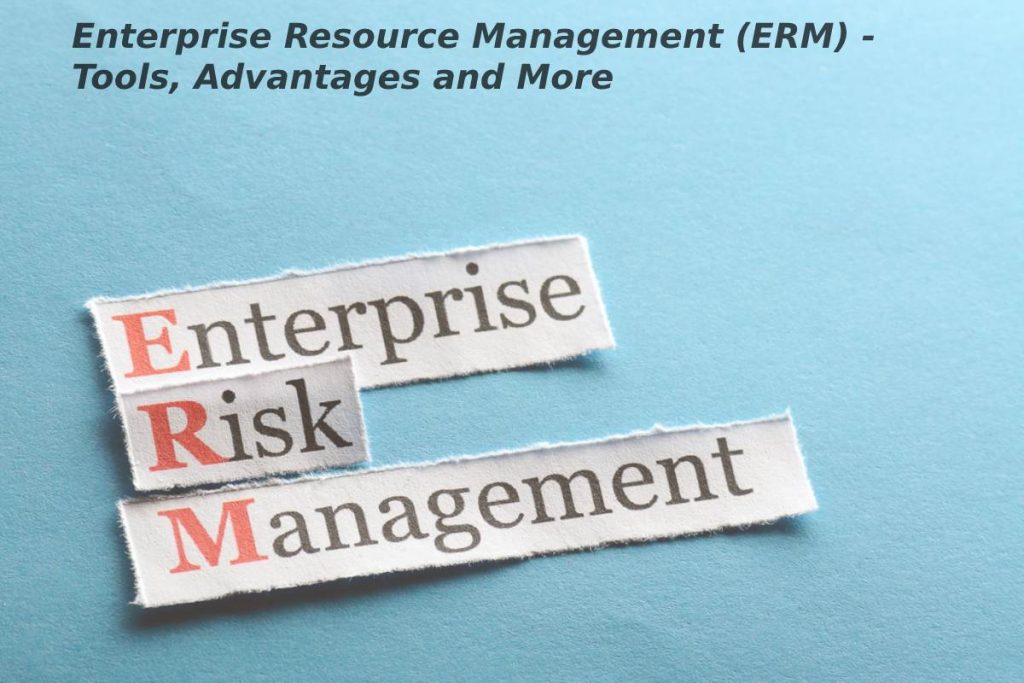Table of Contents
What is Enterprise Resource Management (ERM)
Enterprise Resource Management (ERM) is a framework for managing risks at the organizational level. Organizational risk is an inclusive term. It can cover many concerns, from ensuring employee safety, protecting sensitive data, complying with regulations, and stopping financial fraud. The risk can be internal (e.g. equipment failure) or external (e.g. natural disasters). The definition of risk varies depending on the entity.
The classic perception of risk management consists of the strategies employed to minimize damage. The value, the organization creates for itself, employees, shareholders, customers and the community. All companies decide what they understand as a risk to the organization and conduct risk assessments. An ERM framework is a set of principles and procedures that helps the organization manage anticipated risks for the business to achieve its objectives. In addition, you can use the asana business plan for more management tools for your company.
In this sense, risk management solutions do two things: protect the business from harm and create opportunities to improve business performance.
Why having ERM Tools is essential for the success of the Company.
No matter what your business goals are, corporate risk management can help you achieve them. Although all companies have some form of risk management, true ERM implements strategies and methods so that you can systematically increase your chances of success. When there is no risk management, a company is more likely to make poor decisions, be less prepared, and have difficulty consistently meeting its business objectives.
The COVID-19 pandemic has created a universal case study on the importance of risk management. Overnight, companies suffered from a wide range of problems, from insufficient protection for employees to deficiencies in the supply chain or financial unpredictability; All of this has highlighted the need for agile, flexible and data-driven ERM.
How to Create the Right Framework for Corporate Risk Management
ERM is a business process with its steps, goals, and stakeholders. A reliable and effective ERM framework relies on engaged stakeholder engagement, supported by robust intelligence and meaningful data that can be taken into account.
The goal of an ERM framework is to help you identify, assess, and analyze key business risks and minimize negative business impacts if those risks materialize. The ERM framework must be context-based and modelled for all lines of business, as each department faces different threats and is affected at different levels. Finally, ERM must consider internal and external risks and remember that these risks can create opportunities.
For example, risk modelling will help you understand the potential impact on each business unit and department if you are entering a new market or acquiring a new company. A robust analytical data, AI and machine learning (ML). It can help you create scenarios and models for possible negative impacts and growth potential.
Analytics and Cloud Technology: A Tipping Point in ERM
Technology is a transformative factor in virtually any business process, and ERM is no exception. Technology accelerates corporate risk management capabilities in two important ways.
- It makes the process more data-driven. The traditional risk mitigation workflow had always been top-down: it originated with company leaders. Who defined business risks based on their perception? Technology provides a bottom-up and data-driven function: existing risks are classified, and new ones are identified based on reliable information. This new capacity represents a turning point. What’s more, the more ERM is integrated into existing processes, and the more data it collects about those processes, the greater the capacity of your risk management systems.
- Simplify and digitize the process. Cloud technology enables simple yet secure workflows that unify and coordinate activities across lines of business, locations, and departments. Today, many organisations still rely on spreadsheets, websites, and emails for risk management processes. This absence of secure methods in risk governance limits a company’s ability to identify and plan for risks and creates situations that can lead to data breaches.
How to Choose an Enterprise Resource Management (ERM) Solution
When you want to integrate technology into your risk and compliance strategies, look for a custom ERM solution that can:
- First, the ERM solution must be user-friendly for all stakeholders. This is essential, as it will only be effective if many stakeholders are involved. ERM is not an independent process. It must be deeply integrated into existing systems so that everyone in the company can easily reach it and they can provide information on an ongoing basis.
- An ERM program, along with the implementation of its technology, cannot be isolated and separated from the rest of the organization. As if they were only the responsibility of one person or a group. Remote risk management software rarely impacts other stakeholders. Thus, ERM becomes a process that lacks the essential ingredients for success: collaboration, impact, and global adoption. Instead, try to create a culture in which everyone in the business is aware of the risks.
- When choosing a risk management solution, consider whether it can involve all organisational stakeholders. That is the most decisive factor. Choose an intuitive and straightforward solution to get everyone to use. Although digitized risk management has a technological foundation, its success is based on involving everyone. Both those who are facing the public and the managers. And also becoming part of the daily jobs and decisions, large and small. Little.
The Advantages of Enterprise Resource Management (ERM)
The standard features and benefits of the cloud are a perfect fit for ERM solutions: fast deployment, much more security, and seamless connection. In ERM events, such as system downtime or business interruptions for internal or external reasons, an always-on infrastructure is essential to protect your business and keep it running.
In addition, it should be remembered that collaboration is crucial for effective MRE implementation. Collaboration is much easier in the cloud than outside.
